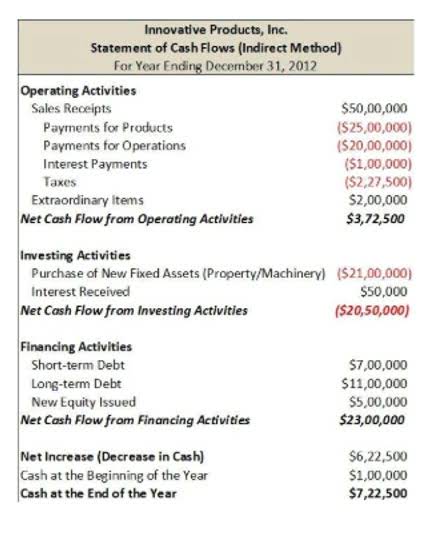Change in Net Working Capital NWC Explained

However, if the change in NWC is negative, the business model of the company might require spending cash before it can sell and deliver its products or services. Working capital should be assessed periodically over time to ensure that no devaluation occurs and that there’s enough left to fund continuous operations. Net working capital can also give an indication of how quickly a company can grow. If a business has significant capital reserves it may be able to scale its operations quite quickly, by investing in better equipment, for example. Taken together, this process represents the operating cycle (also called the cash conversion cycle). Suppose an appliance retailer mitigates these issues by paying for the inventory on credit (often necessary as the retailer only gets cash once it sells the inventory).
How to Calculate Net Working Capital (NWC)
In extreme cases, being unaware of the equation for net working capital can result in cash crunches, leading to business closure. What is a more telling indicator of a company’s short-term liquidity is an increasing or decreasing trend in their net WC. A company with a negative net WC that has continual improvement year over year could be viewed as a more stable business than one with a positive net WC and a downward trend year over year. Any change in working capital can affect cash flow, which is the net amount of cash and cash equivalents being transferred in and out of a company.
Is Negative Working Capital Bad?
Since we’re measuring the increase (or decrease) in free cash flow, i.e. across two periods, the “Change in Net Working Capital” is the right metric to calculate here. For instance, if NWC is negative due to the efficient collection of receivables from customers who paid on credit, quick inventory turnover, or the delay in supplier/vendor payments, that could be a positive sign. Even though the payment obligation is mandatory, the cash remains in the company’s possession for the time being, which increases its liquidity. The net effect is that more customers have paid using credit as the form of payment, rather than cash, which reduces the liquidity (i.e. cash on hand) of the company.
Best Practices Every Cash Manager Should Follow

To calculate this ratio, you take a business’s short-term money and compare it to all the money it has. This ratio is expressed as a percentage, which tells you how much short-term money exists in relation to the business’s total money. In this blog, we will dive into net working capital, learn how to calculate it correctly, and see why it’s crucial for a company’s financial well-being. They can improve their financial health by managing inventory better and renegotiating supplier agreements to delay payment schedules. Therefore, as of March 2024, Microsoft’s working capital metric was approximately $28.5 change in net working capital formula billion. If Microsoft were to liquidate all short-term assets and extinguish all short-term debts, it would have almost $30 billion remaining cash.
- On the subject of modeling working capital in a financial model, the primary challenge is determining the operating drivers that must be attached to each working capital line item.
- Conversely, if a company is not growing, it may not need as much working capital and may experience a decrease in net working capital requirements.
- Below is Exxon Mobil’s (XOM) balance sheet from the company’s annual report for 2022.
- It encompasses current assets such as cash, inventory, and accounts receivable, minus current liabilities like accounts payable and short-term debt.
- For example, a positive WC might not really mean much if the company can’t convert its inventory or receivables to cash in a short period of time.
- The amount of working capital does change over time because a company’s current liabilities and current assets are based on a rolling 12-month period, and they change over time.
- Next, add up all the current liabilities line items reported on the balance sheet, including accounts payable, sales tax payable, interest payable, and payroll.

Current liabilities include accounts payable, trade credit, short-terms loans, and business lines of credit. Essentially, working capital is the amount of money a company has available to pay its short-term expenses. A healthy business has working capital and the ability to pay its short-term bills. A current ratio of more than one indicates that a company has enough current assets to cover bills that are coming due within a year.
- A high net working capital demonstrates that a company efficiently utilizes its resources.
- It tells us if a business has enough money to handle its daily expenses and to invest in its future.
- Calculating the change in assets is an effective first step in doing just that.
- Let’s define net working capital and look into why net working capital is so important for the operations of a business and what you can do to manage it efficiently.
- In this perfect storm, the retailer doesn’t have the funds to replenish the inventory flying off the shelves because it hasn’t collected enough cash from customers.
- For example, if you have $1.35 million in cash, $750,000 worth of products, $58,000 in short-term investments, and $560,000 in accounts receivable, your total current assets would be $2.158 million.

Change in net working capital refers to how a company’s net working capital fluctuates year-over-year. If your net working capital one year was $50,000 and the next year it was $75,000, you would have a positive net working capital change of $25,000. The interpretation of either working capital or net working capital is nearly identical, as a positive (and higher) value implies the company is financially stable, all else being equal. This example shall give us a practical outlook of the concept and its ebbs and flows. Your job as an analyst is to connect the numbers to the real-world factors driving the business. Calculating the change in assets is an effective first step in doing just that.

From Year 0 to Year 2, the company’s NWC reduced from $10 million to $6 million, reflecting less liquidity (and more credit risk). Suppose we’re tasked with calculating the net working capital (NWC) of a company with the following balance sheet data. A company’s growth rate can affect its change in net working capital requirements.
Everything You Need To Know About Automated Treasury Management
Lenders will often gross vs net look at changes in working capital when assessing a company’s management style and operational efficiency. • Net working capital (NWC) is the difference between a company’s current assets and current liabilities. On the other hand, examples of operating current liabilities include obligations due within one year, such as accounts payable (A/P) and accrued expenses (e.g. accrued wages).
